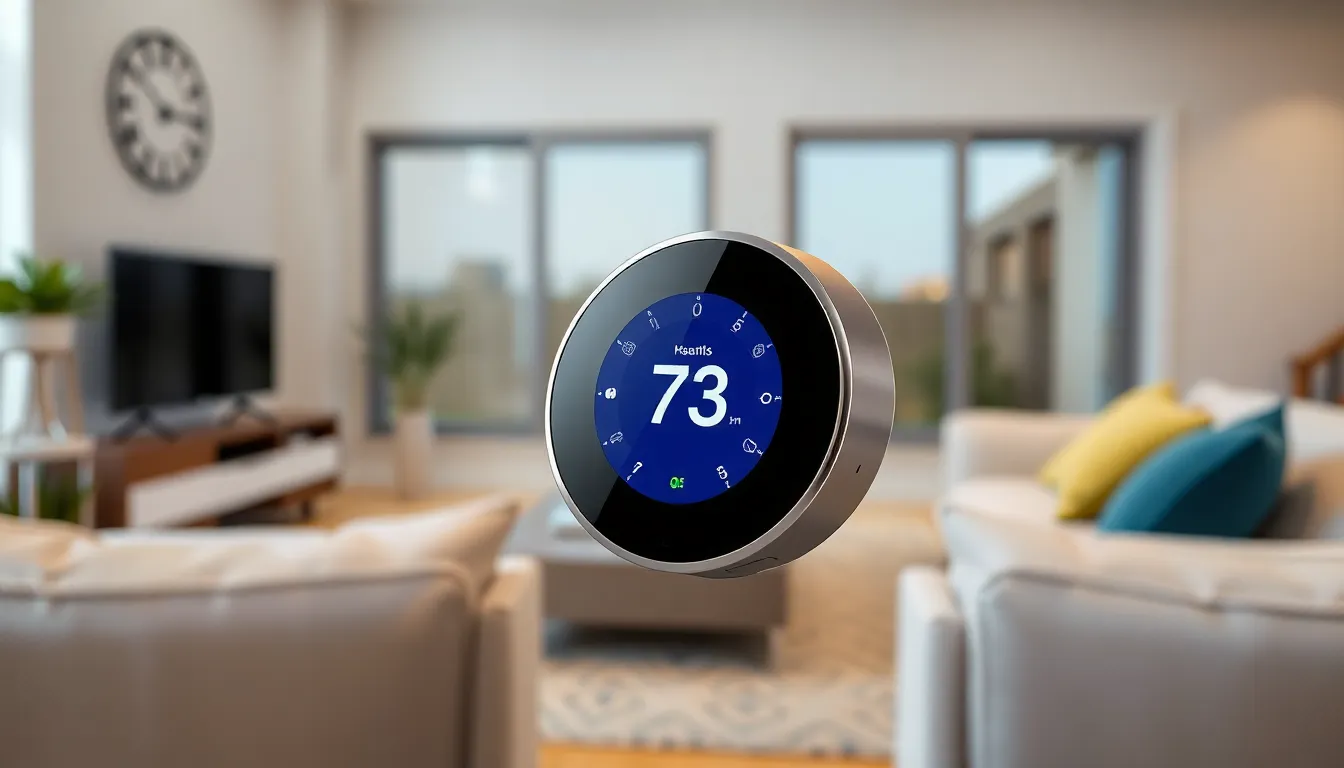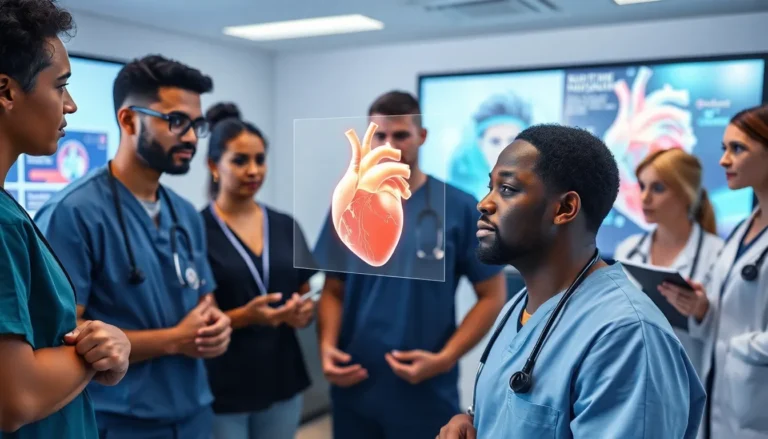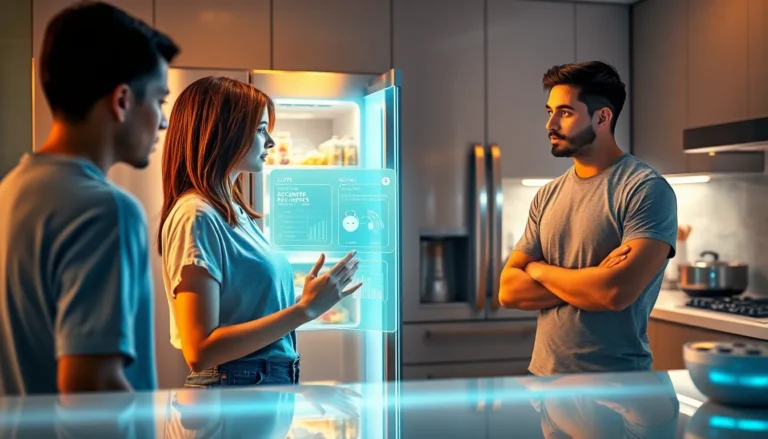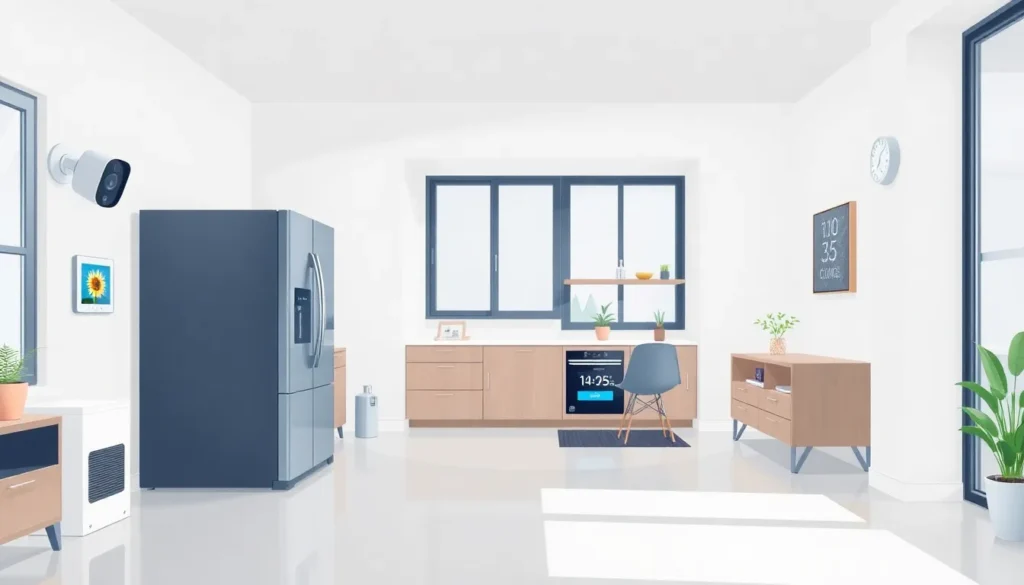Table of Contents
ToggleImagine a world where your toaster knows exactly how brown you like your bread and your fridge can remind you when you’re running low on milk. Welcome to the future of the Internet of Things (IoT), where everyday objects are getting smarter and more connected. It’s not just sci-fi anymore; it’s happening right now, and it’s about to change everything.
Overview Of IoT
The Internet of Things (IoT) connects various devices, allowing them to communicate and share data. This integration enhances functionality, making everyday objects intelligent. Smart home devices, such as security cameras, thermostats, and light bulbs, illustrate this interconnectedness.
Data collection plays a crucial role in IoT. Devices collect information, analyze it, and provide insights that improve user experiences. Smart refrigerators, for instance, track groceries, remind users of expiration dates, and suggest recipes based on available items.
Scalability defines the future of IoT. As more devices connect, the potential for automation and efficiency grows. A smart city exemplifies this concept, where traffic lights, waste management systems, and public transportation synchronize to optimize urban living.
Security poses significant challenges in IoT. Increased connectivity raises vulnerabilities, making strong data protection essential. Users must adopt best practices, such as updating device software regularly and using strong passwords, to safeguard personal information.
Interoperability remains a key factor for IoT’s success. Devices from different manufacturers must work seamlessly together. Industry standards and open platforms promote collaboration, ensuring users enjoy a cohesive experience across devices.
Energy efficiency is another pivotal aspect. IoT devices monitor energy consumption, leading to more sustainable practices. Smart meters and connected appliances enable households and businesses to reduce energy waste significantly.
The IoT landscape is evolving rapidly, driven by advancements in technology and connectivity. Ensuring security, scalability, and energy efficiency alongside fostering interoperability will shape its future.
Trends Shaping The Future Of IoT


The Internet of Things continues to evolve, driven by groundbreaking technologies and shifting consumer needs. Significant trends are emerging, influencing how devices interact and integrate into daily life.
Artificial Intelligence Integration
Artificial intelligence (AI) enhances the capabilities of IoT devices. AI algorithms analyze data from connected devices, allowing for real-time decision-making. Businesses benefit from predictive analytics that optimize operations and reduce downtime. Home automation systems utilize AI for personalized user experiences, adjusting environments based on individual preferences. Furthermore, machine learning helps devices learn from user interactions, leading to improved functionality over time.
5G Technology Impact
5G technology plays a crucial role in IoT’s advancement by providing faster data transfer rates. This ubiquitous connectivity enables large volumes of devices to operate simultaneously without latency. Smart cities greatly benefit from 5G, allowing traffic systems to communicate effectively and manage congestion. Additionally, remote healthcare solutions gain efficiency through 5G, facilitating real-time patient monitoring. Enhanced bandwidth supports seamless interaction between IoT devices, driving innovation and expanding potential applications across various industries.
Challenges Facing The Future Of IoT
Challenges in the IoT landscape could hinder its growth potential. Two significant issues are security concerns and scalability.
Security Concerns
Security constitutes a major obstacle in IoT’s development. As devices connect and accumulate data, vulnerabilities increase, attracting cyber threats. Unauthorized access to smart devices can compromise personal data and lead to significant breaches. Effective encryption methods and robust authentication mechanisms become essential for safeguarding information. Protecting end-users from malicious attacks remains a top priority for manufacturers and developers. Numerous industry standards exist to guide security protocols, yet compliance varies widely. Continuous updates and monitoring can mitigate risks, yet many devices lack the capability for regular updates, leaving them susceptible. Overall, addressing security challenges demands a collaborative effort across the IoT ecosystem.
Scalability Issues
Scalability presents another pressing challenge for IoT implementation. As the number of connected devices surges, systems must efficiently manage increasing data volumes. Slow response times can disrupt user experiences and hinder operational efficiency. Standards and protocols must evolve to accommodate diverse device types and manufacturers. Effective network infrastructure plays a vital role in supporting this growth. Additionally, cloud-based solutions often become necessary to store and process data generated by IoT devices effectively. Organizations should implement strategies focused on seamless integration and expansion to adapt to changing demands. Ensuring compatibility across devices matters greatly as IoT continues to expand.
Future Predictions For IoT
The future of IoT promises significant advancements across various sectors. Emerging technologies are set to reshape environments and improve daily operations.
Smart Cities Development
Smart cities are poised for transformation through IoT integration. Interconnected devices will enhance urban infrastructure, optimizing traffic flow and energy distribution. For instance, intelligent traffic lights can adjust in real time based on vehicle congestion. This shift reduces wait times and improves air quality with lower emissions. Furthermore, smart waste management systems will monitor fill levels in bins, promoting efficient collection schedules. Citizens will benefit from enhanced public services, such as real-time information on public transportation. Overall, seamless connectivity among devices will make cities more efficient, sustainable, and livable.
Healthcare Innovations
Healthcare stands to gain immensely from IoT advancements. Wearable devices will monitor patient health metrics continuously, allowing for proactive interventions. These devices can send alerts to healthcare providers if vital signs indicate potential issues, ensuring timely care. Remote patient monitoring systems will enable doctors to track patients’ conditions without frequent in-office visits, improving access to care. Additionally, medical equipment connected to IoT networks will streamline operations in hospitals, reducing administrative burdens and improving patient outcomes. By facilitating real-time data sharing, IoT innovations will ultimately lead to a more responsive and efficient healthcare landscape.







